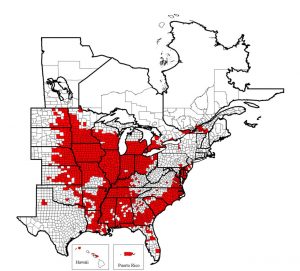Crop conditions and potential in mid-June
Warm temperatures continue in Illinois, with growing degree day (GDD) accumulations since May 1 running from 150 above average in northern Illinois to about 250 GDD above average in the rest of the state. With GDD accumulations of 900 to 1,000 since May 1, the corn crop planted in early May is at V10 to V14, about 30 to 60 inches tall, and needing only about 350 to 450 more GDD to tassel and silking. With daily accumulations at about 25 GDD,…






